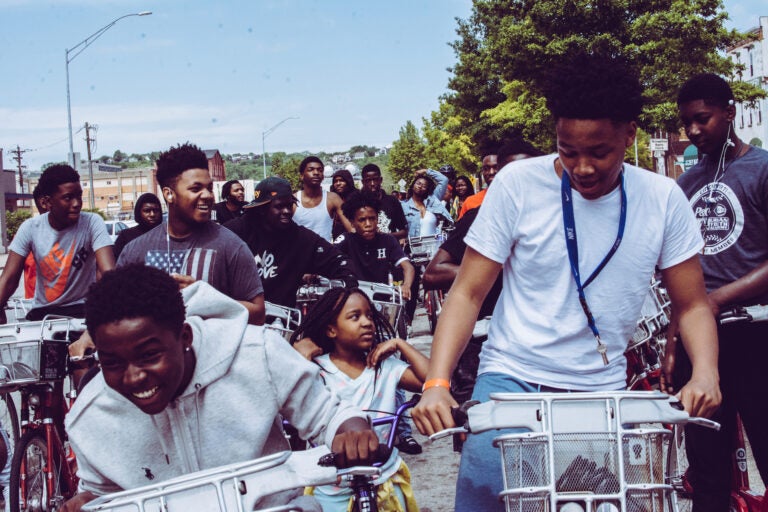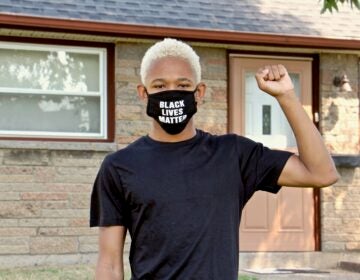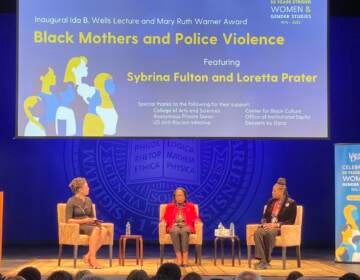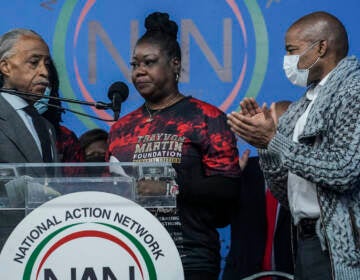Elijah McClain and the invisibility of ‘different’ Black and brown boys
I challenge all of us to see, understand, and appreciate the uniqueness and individual qualities of different Black and brown boys, writes Whiquitta Tobar.

Kids on bicycles in Cincinnati. (Ahshea1 Media/Pexels)
They don’t see him. They can’t see him.
Those were my first thoughts when viewing the disturbing video of the police assault and subsequent murder of Elijah McClain, a 23-year-old, Black violinist from Aurora, Colorado.
My immediate next thought was of the daily invisibility suffered by the many “different” Black and brown men and boys who I represent in courtrooms. My clients are all too often not seen for who they are, but rather viewed as reflections of stereotypical Black masculine prototypes.
Teachers, school administrators, judges, therapists, psychiatrists, are all seemingly impervious to the unique and individual needs of these neurodiverse, special and “different” Black men and boys.
I heard Elijah say with his last breaths – before he is forcibly injected with 500 mg of ketamine causing his death – “I’m an introvert. I’m just different.”
This execution occurs all because of his perceived “agitated mental state” and his decision to not stop walking and engage with police officers, who had not yet placed him under arrest or in custody.
I hear those words, I see that outcome, and – as an empathetic lawyer and human being – I worry for my clients, all of whom have disabilities. I worry about the deadly assumptions of hypermasculinity and aggressiveness assigned to them, through no fault of their own, which could jeopardize their safety. What happens when someone says that they are “acting suspicious” because they are repeating words and movements, or lack understanding of social cues, which are all common symptoms of autism?
I replay the video of Elijah’s body stiffening to the touch and invasion of his space by police officers. He states, “please, respect my boundaries,” and I think of my autistic clients who are triggered by people who touch them or invade their personal space. I worry, because I know that the world has no safe haven for “different” Black and brown men and boys. And as an attorney in disability cases, I worry about the impact their invisibility has on their diagnoses, on their ability to get needed services after their diagnoses, on their therapy records, and on the perception of the judges who will decide their cases.
I worry about how many missed social cues are listed as defiant behavior. I wonder how often poor eye contact and silence due to speech difficulties are perceived as disinterest in therapy sessions or disability hearings. I think about how my clients’ use of seemingly misplaced statements are marked or described as inappropriate and/or threatening in their individualized education plans (IEPs) and school records. They are not seen, and being invisible and/or misrepresented is not a neutral state of being.
To be clear, I am in no way attempting to diagnose Elijah McClain, who died on August 24, 2019. I do not have knowledge of his medical records, and his family has not made that information public. Maybe he did not have a diagnosis and maybe he is not on the autism spectrum at all, but there are many Black and brown men and boys who share behavioral characteristics with Elijah who do have diagnoses, and who are punished for them.
I have appeared before judges who were not able to appropriately recognize autistic symptoms in my clients. I have seen autistic clients’ medical records and therapy notes that are replete with misdiagnoses and misrepresentations of their mental and behavioral health symptoms. Many of my autistic clients were diagnosed at later-than-average ages, although they held many of the common symptoms.
Also, it is not lost on me that white children are about 19% more likely than Black children and 65% more likely than Hispanic children to be diagnosed with autism, although they have similar prevalence rates.
We can partially attribute the difference in rate of diagnoses to the lack of access to diagnostic services for Black, Indigenous, People of Color (BIPOC) children. We also know that if and when a BIPOC child is diagnosed, it occurs later in their life and results in them requiring longer and more intensive intervention. This means that there are some Black and brown men and boys who do not have diagnosis due to institutional racism.
We couldn’t save Elijah McClain. However, we can save many self-described “different” Black and brown men and boys, who are in need of our collective help. I call on teachers to better educate themselves on autism and other mental/behavioral health disorders, especially regarding Black and brown boys with perceived behavioral issues. I ask that therapists and psychiatrists educate themselves on how racial biases can impact a diagnosis, and continue to progress in identifying autism earlier in Black and brown children.
I call on judges in disability hearings to analyze their own biases, that may be connected to intersectional racial and gender stereotypes, in their assessment of SSI claimants. And I challenge you to educate yourself on the impact that racism has on behavioral and mental health misdiagnosis, late diagnosis, and treatment.
Lastly, I challenge all of us to see, and I mean really understand and appreciate, the uniqueness and individual qualities of different Black and brown boys. The more we see them, the more we create a world that affords them the ability to stay alive.

Get daily updates from WHYY News!
WHYY is your source for fact-based, in-depth journalism and information. As a nonprofit organization, we rely on financial support from readers like you. Please give today.






